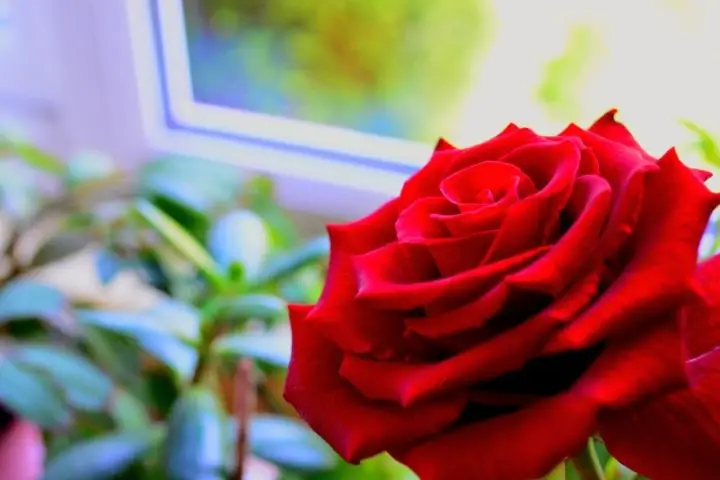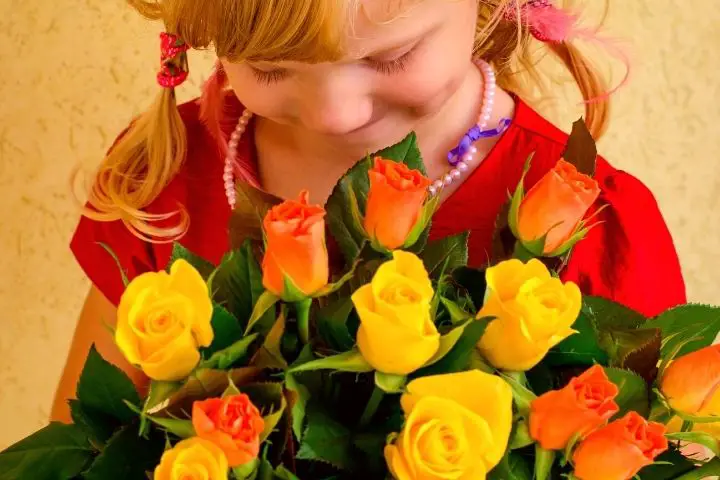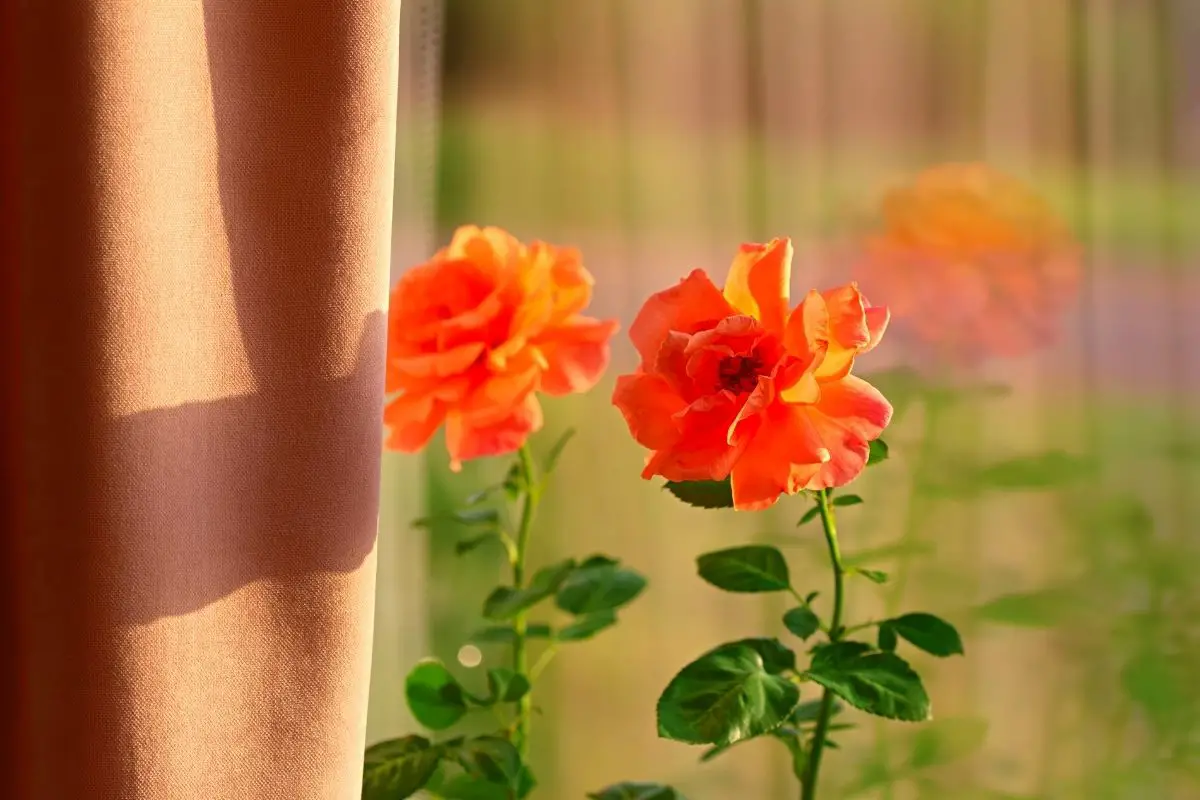Can You Grow Roses Indoors | With some dedication, you can!
When we think of roses we probably think of romantic gardens and beautiful, climbing perennials.
However, that’s not the only way you can grow roses. You can also grow roses inside the home so that you can enjoy their sweet, fragrant smells all year long!
To be honest, roses are probably not the easiest plant to grow indoors, but, with dedication and the right elements, it is definitely possible and achievable. If you are after a super easy plant to grow, look no further than growing Aloe Vera indoors – they are next to impossible to kill!
Now, let’s take a look at how you can grow roses indoors and what special instructions you need to follow to do so correctly.
What Types of Roses Can I Grow Indoors?
You can grow just about any type of rose you like indoors! The main thing to be aware of when planning to grow indoor roses isn’t so much the type of plant as the conditions.
A few common types of roses people grow indoors include:
- Miniature roses
- French lace roses
- Marlena
- Marie Pavie
- Bright Smile
These are just a couple of the different kinds of roses you can experiment with growing indoors, however. If you have a favorite variety of roses, don’t be afraid to try your hand at cultivating the plant inside!

How to Grow Roses Indoors
Once you’ve selected the type of rose you’d like to grow, it’s time to get down to business. Let’s take a look at some of the factors to consider as you grow roses indoors.
Choose the Right Soil
One of the first things you need to figure out when growing roses is the type of potting soil you’ll be using.
Roses need a very specific type of soil. They need soil that allows moisture to drain thoroughly, but that won’t let the water seep out super fast.
The soil needs to retain the water long enough for the rose bushes’ roots to soak up the water and provide nutrients to the plant.
In general, you’ll want soil comprised of at least one-third of hummus. Hummus is dead, organic plant matter (think compost) that provides nutrients to the plants.
A good option for rose soil is loam. This type of soil provides good drainage and is nutrient-rich, making it ideal for these finicky plants.
Select Sunny Spots
One of the most important aspects of growing roses indoors is selecting a spot that provides enough sunlight for the plant. Roses need at least six hours of sunlight a day, but if you can give them more, that’s better.
Try to find a spot in the home that gets a good amount of direct sunlight throughout the day. A large window facing toward the sun will usually work well for roses, as they’ll get sunlight during the earlier parts of the day. Grow lights can also be used to help generate enough light.
In addition to needing sunlight, roses also need a fairly warm climate. They don’t do too well at temperatures below 70º Fahrenheit.
Now, while this might sound tough, it’s actually what makes growing roses indoors such a good idea! Since outdoor temperatures fluctuate, they can often be what causes rose gardens to die.
On the other hand, you can control the temperatures in your home much more easily. That makes it much simpler for you to cultivate beautiful blooms!
Water Your Roses Right
If you’re used to growing succulents and cacti, then you’re not used to regular watering. This is a habit you’ll need to get into if you plan on growing roses!
Roses need about two gallons of water two times a week. That’s a lot of water to be feeding these beauties!
Roses need time to soak up the water, which is why you’ll apply such a huge amount of water to them. Keep in mind that the roses may need more (or less) water depending on the season.

The best time to water your roses is in the earlier morning. The earlier in the day you water them, the more time they have to soak up the water before it evaporates in the afternoon heat.
For example, if you live in a particularly hot climate, you might want to consider increasing the amount of water to 4 gallons twice per week.
Pick the Perfect Pot
If you’re used to growing roses in a garden you won’t be used to providing pots for your flowers to live in. And, when growing indoor plants, the pot is one of the most important factors to keep in mind.
Roses usually need slightly larger pots than many other indoor plants. Large tubs or longer boxes are a good choice.
In terms of material, it’s best to use a wooden pot for roses. Plastic pots tend to retain moisture while terra-cotta pots tend to allow the water to evaporate faster than the roses can soak it up.
The exact container size you use for your roses will vary depending on how large you’re growing them. Typically, however, aim for an 18-inch pot as this gives the roots of the plant plenty of space to spread out.
Grow the Perfect Rose Garden Indoors
Even though growing roses indoors isn’t the most common way to cultivate these plants, it can certainly be rewarding.
When treated right, roses make great indoor plants and are a fantastic addition to your home.
So, if you’re ready to get started, keep these growing tips in mind. We’re confident that you’ll be able to great bright and beautiful rose bushes inside your home.
Frequently Asked Questions
Are Roses Toxic to Cats?
Roses aren’t toxic for cats, however, you should still keep your cats away from them as they may cause an upset tummy! Cat’s digestive system is not designed for it.

How Do You Keep Roses Alive Indoors?
Keeping roses alive indoors is actually much easier than keeping them alive outdoors. Why? Because it’s far easier to control the environment! Since roses are pretty finicky plants, growing them indoors is a great way to monitor sunlight and temperature to keep them happy.
Can You Grow Roses Indoors Year-Round?
Yes! You can grow roses indoors year-round as long as you keep the temperature consistent. Roses thrive in temperatures of about 70º Fahrenheit, so try to maintain the home at about that temperature for the best results.
How Long Do Indoor Rose Plants Last?
Although growing indoor roses can be a lot of fun, they’re not a very long-term plant. They’ll usually bloom for just two to three weeks before the flowers wither. The plants can last for much longer, but you may need to eventually plant them outdoors to get the best blooms.





